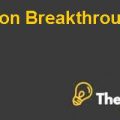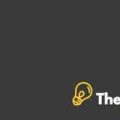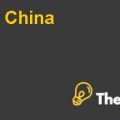
QUESTION 1
Why is Seagate undertaking this transaction? Who are the likely winners and losers?
Based on the current organizational structure of the company, the management of the company believed that the stock price of the company did not reflected the potential of the company as it was undervalued by the market. The wealth for the shareholders of the company was not being created. During this period, around 40% holding was held by the management of Seagate in VERITAS.
As this transaction took place, the stock price had just risen by 25% as compared to 200% of VERITAS. The interest of Seagate in VERTIAS was increased that the total value of Seagate was less than the value of this single asset. This issue had raised the problems on the part of the shareholders and they were concerned that why a fair value was not being returned by the Seagate’s stock.
If at this point of time, Seagate collected cash by selling its stock, then it would incur huge tax liabilities and as a result the stock price of Seagate would be affected negatively. Therefore, the management of the company saw an opportunity for growth in the market through its disk drive operations. This segment was undervalued despite being the market leader therefore, the management thought for a restructuring of the division through buyout.
The restructuring of the buyout of Seagate by the Silver Lake is necessary. As mentioned previously that large tax liability is one of the major issues for Seagate when selling off the assets of VERITAS. Therefore, it is recommended for the management of the company to create two separate transactions so that the tax shield could be created separately and in this way this proves to be a good deal for the VERITAS and Seagate’s shareholders. Through this restructuring, the shareholders of VERITAS would also benefit with the gain created from the transaction.
QUESTION 2
Is the rigid disk drive industry conducive to a leveraged buyout? Why or why not?
Before assessing the impact of the Leveraged Buyout on the on the disk drive business some of the benefits of leveraged buyouts are listed below:
- As the management has greater stake in the equity of the company therefore, LBOs increase the commitment of the management.
- Large positive abnormal returns could be earned under an LBO by the firm’s shareholders.
- Those investors that invest in the company after the buyout completion date usually make large excess returns. These excess returns are normally earned by them between the buyout completion date and the date of the resale of the business or an initial public offering.
- The tax payments of the company after an LBO are decreased as a result of the increasing levels of debts because the high debt decreases the taxable income of the company. After an LBO.
- Furthermore, the value of the firm is also increased with the amount of the present value of the tax shield over interest payments discounted at the cost of debt.
The disk drive industry is rigid and it is highly conducive to LBOs, which are vertically integrated. This is because the mobile system, desktop and the enterprise system manufacturers will not be depending upon any external suppliers for these technologies as these technologies would be control in-house within the organization through complete control over the critical enabling technologies.
Furthermore, the research and development could also be controlled by the manufacturers through the cutting edge technologies in all of its core products. The entire mobile, enterprise and the desktop system manufacturers are going to have more control over the entire process of manufacturing. The manufacturers can also maintain lower levels of inventory because then they would not need to worry that if there is a sudden increase in the demand experiences, then they would have to rely on the suppliers; as that would not be the case then.
QUESTION 3
Luczo and the buyout team plan to finance their acquisition of Seagate’s assets using a combination of debt and equity. If they want to maintain a credit rating of BBB or above, how much debt would you recommend that they use?
The disk drive industry in which Seagate has been operating is a volatile industry and therefore, the cash flows of the company are not stable. Seagate has a large amount of debt on its balance sheet already of $ 704 million compared to the competitor’s level of debt of $ 110 million and $ 236 million. Furthermore, the company would be going under vertical integration therefore, the company would also be incurring huge capital expenses and higher research and development costs................
This is just a sample partial case solution. Please place the order on the website to order your own originally done case solution.













